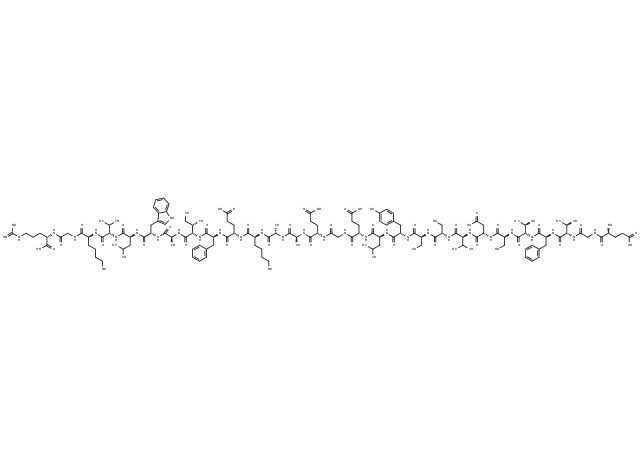Shopping Cart
- Remove All
 Your shopping cart is currently empty
Your shopping cart is currently empty


| Pack Size | Price | Availability | Quantity |
|---|---|---|---|
| 1 mg | $81 | In Stock | |
| 5 mg | $255 | In Stock | |
| 10 mg | $378 | In Stock | |
| 25 mg | $626 | In Stock | |
| 50 mg | $883 | In Stock | |
| 100 mg | $1,190 | In Stock |
| Description | antagonist at the human GLP-1 receptor |
| In vivo | After subcutaneous (s.c.) administration of GLP-1 to dogs the plasma immunoreactivity of GLP-1 measured by two different radioimmunoassays (RIAs) were higher than that measured by a sandwich enzyme-linked immunosorbent assay (ELISA). This discrepancy was due to the formation of the metabolites GLP-1-(9-36) amide, GLP-1-(7-35) and GLP-1-(7-34). Receptor binding studies using baby hamster kidney cells expressing the human pancreatic GLP-1 receptor showed that the affinity of GLP-1-(9-36) amide was 0.95% of the affinity of GLP-1-(7-36) amide. Furthermore, GLP-1-(9-36) amide was shown to be an antagonist to adenylyl cyclase activity. GLP-1-(9-36) amide was shown to be present in vivo in amounts up to 10-fold that of GLP-1-(7-36) amide[2]. |
| Molecular Weight | 3089.41 |
| Formula | C140H214N36O43 |
| Cas No. | 161748-29-4 |
| Storage | store at low temperature,keep away from moisture |
| Solubility Information | 0.025% acetic acid: 2 mg/ml |

Copyright © 2015-2024 TargetMol Chemicals Inc. All Rights Reserved.